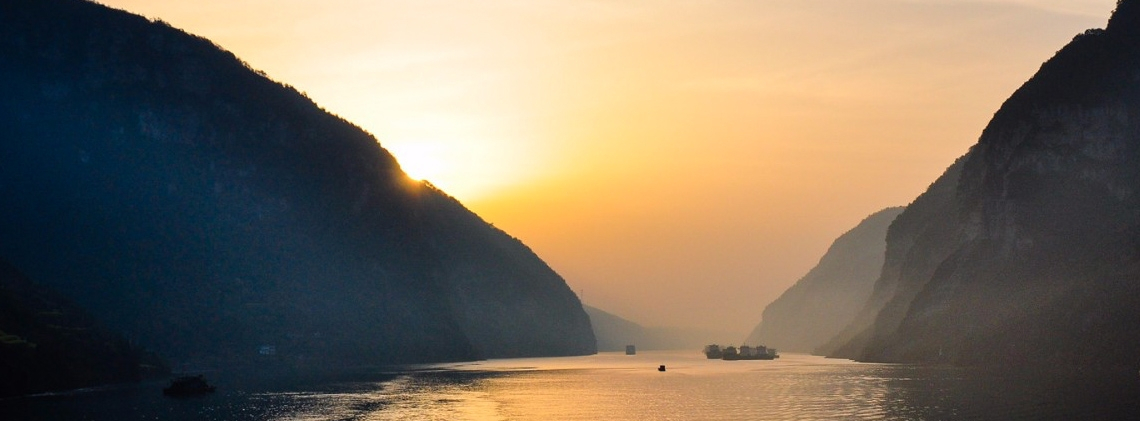
Cradles of Chinese Civilization: Yellow River and Yangtze River
Splendid
Chi Culture
Topic
Cradles of Chinese Civilization: Yellow River and Yangtze River
All ancient human civilizations originated in river basins, mostly alluvial valleys. Mesopotamia (the region between the Tigris and Euphrates rivers), the Nile, the Indus, and China’s Yellow River (Huanghe) and Yangtze River (Changjiang) gave birth to the four great ancient civilisations.
Drainage basins fostered fertile and porous soil and enabled easy irrigation which were ideal for cultivation and farming. In order to prevent floods and undertake water conservation projects, people in ancient times organized themselves and gradually developed divisions of labor. Thus, human civilization started to blossom with communications facilitated by waterways. The Yellow River and the Yangtze River have nurtured Chinese civilization for thousands of years.
The Yellow River, which rises in Qinghai province and flows into the Bohai Sea, runs 5,494 kilometers across northern China’s nine provinces—Qinghai, Sichuan, Gansu, Ningxia, Inner Mongolia, Shanxi, Shaanxi, Henan, and Shandong, carrying great amounts of silt on its way past loess plateaus.
The well-known Tang poet Li Bai (701–762) wrote in one of his poems that “Don’t you see the waters of the Yellow River come flowing from the sky, / The torrential stream rushes into the sea and never returns.” The upper and middle reaches of the Yellow River go through mountainous areas, and its middle and lower reaches cross plains and hilly lands, wherein canyons and waterfalls take form. What Li Bai described as “from heaven” actually refers to the high elevation of the upper Yellow River. In the lower reaches of the river, where the stream decelerates in the plains, silt in the water forms sediments and raises the riverbed higher than the surrounding land. This is what people call a “hanging river” or an “above-ground river.”
For some 3,300 years up to 1949, the Yellow River caused approximately 1,600 floods with twenty-six shifts along its course. It was long feared for its “constant silting, constant overflowing, and constant shifting.” The Daqingguan (Daqing Pass) was located east of Dali county in Shaanxi province. However, as the Yellow River frequently changed its course, the pass has been located on either side of the river at various times. This peculiar phenomenon is vividly described by the proverb “thirty years on the east riverside and thirty years on the west riverside,” which means “every life has its ups and downs.” The frequent flooding and shifting of the river caused considerable inconvenience to people, and harnessing the Yellow River posed a great challenge to all Chinese emperors.
The Yangtze River is the southern counterpart to the northern Yellow River. The 6,397 kilometers long Yangtze is the longest river in Asia and the third longest river in the world. Originating from the Tongtian River on the “roof of the world”—the Tibetan Plateau, the Yangtze River traverses eleven provinces and municipalities: Qinghai, Sichuan, Tibet, Yunnan, Chongqing, Hubei, Hunan, Jiangxi, Anhui, Jiangsu, and Shanghai.
The culture derived from the Yangtze River basin is different from the one that originated from the Yellow River. The language prevailing along the Yangtze River differed enormously from that of the Central Plain before the Spring and Autumn period (770–476 BCE). The witchcraft-practicing (or spirit-medium) Jing-Chu culture that flourished along the Yangtze River was also largely different from its rustic northern counterpart. Communication between the north and south increased after the Qin (221–206 BCE) and Han (206 BCE–220 CE) dynasties, and the opening of the Grand Canal during the Sui dynasty (581–618) expedited economic and cultural integration by connecting the Yellow River and the Yangtze River.
The Yangtze River basin has also experienced many droughts and floods. Since the 1990s, the middle and lower Yangtze River basin has been plagued by annual inundations. In 1990 China launched its largest construction project; known as the Three Gorges project it was designed to curb floods, generate hydraulic power, and improve the waterway between Chongqing and Yichang.



